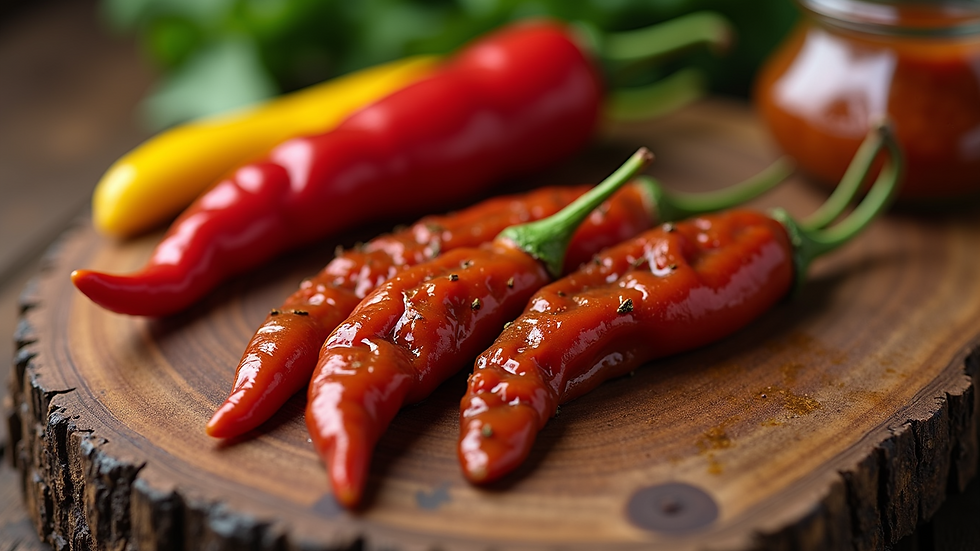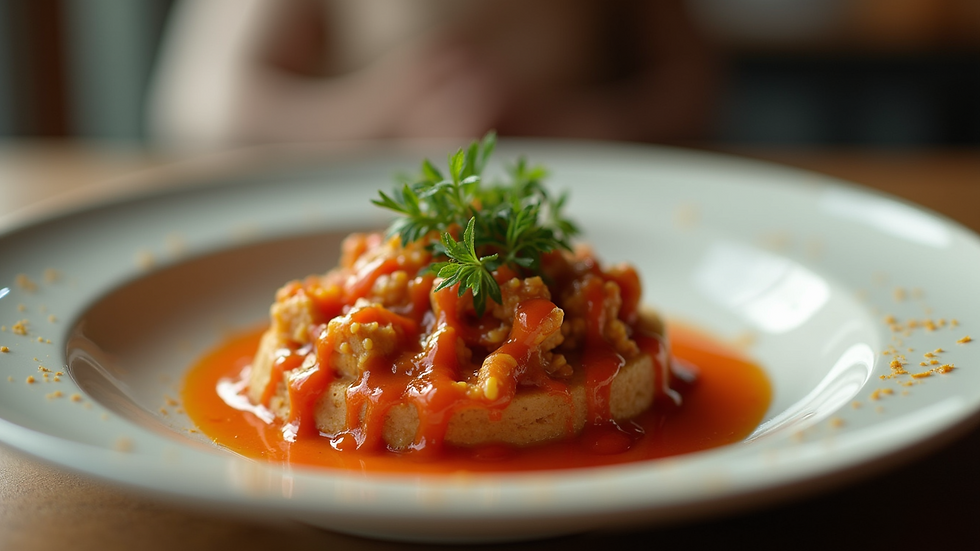Exploring the World of Hot Sauces: A Flavorful Journey
- Johnny Hexburg

- Apr 7
- 4 min read
Hot sauces have become a staple in kitchens worldwide, offering a burst of flavor and heat to countless dishes. Whether you're a spice aficionado or a curious beginner, diving into the world of hot sauces can be both exciting and rewarding. This blog post will explore the origins, varieties, and culinary uses of hot sauces, helping you navigate this fiery landscape with ease.
The History of Hot Sauces
Hot sauces trace their origins back thousands of years. Ancient civilizations, like the Aztecs and Mayans, were some of the first to cultivate chili peppers and use them in their cooking. They recognized the chili's ability to enhance flavors and its health benefits.
In the 19th century, commercial hot sauces started appearing in the United States. Tabasco, founded in 1868, is one of the most iconic brands that popularized hot sauce consumption. This long-standing tradition of adding heat to dishes has paved the way for countless variations we see today.

Types of Hot Sauces
The hot sauce market is vast and varied. Knowing the different types can help you choose the right sauce for your meals. Here are some popular styles:
American Hot Sauces: These often feature vinegar as a primary ingredient. They are tangy and can range from mild to super hot. Brands like Frank's RedHot and Tabasco exemplify this category.
Mexican Hot Sauces: Typically more complex in flavor, these sauces often use ingredients like tomatoes, garlic, and spices. Salsa and mole sauces fall into this category. Brands like Cholula offer a delightful mix of spice and flavor.
Caribbean Hot Sauces: Influenced by local fruits and spices, Caribbean hot sauces can have a sweet and fruity undertone. Consider sauces made with scotch bonnet peppers which are known for their fruity flavor profile.
Asian Hot Sauces: These sauces vary widely but often include soy sauce, sesame oil, and various spices. Sriracha, a garlic chili sauce, has soared in popularity in recent years.
Specialty Hot Sauces: These sauces can combine different flavors and heat levels, making them truly unique. The popular hot ones sauces represent this specialty category, offering unique blends that enhance the eating experience.

The Art of Pairing Hot Sauces
Using hot sauce is more than just pouring it over your food. Pairing the right sauce with the right dish can elevate your dining experience. Here are a few tips:
Mild Sauces: Great for pasta, eggs, and salads. A mild hot sauce won’t overpower the dish but will add a layer of flavor.
Medium Sauces: Perfect for tacos, grilled meats, and pizza. These sauces provide a nice kick without overwhelming the palate.
Hot Sauces: Suited for stews, barbecues, and fried foods. When you want a real punch, reach for the hotter varieties.
Sampling different sauces with various foods is an excellent way to discover new favorites. Whether you enjoy a dash in a marinade or a hearty spoonful on your soup, experimenting is key.

Health Benefits of Hot Sauces
While hot sauces add spice to your meals, they can also bring health benefits:
Metabolism Boost: Spicy foods, including hot sauces, can boost your metabolism and help burn calories more effectively.
Vitamins and Antioxidants: Many hot sauces contain peppers, which are rich in vitamins A and C. These nutrients can help improve your immune system and overall health.
Pain Relief: Capsaicin, the compound that gives peppers their heat, has been studied for its potential pain-relief capabilities. Some research indicates it may aid those suffering from arthritis and other chronic pain conditions.
Mood Enhancement: Spicy foods can trigger the release of endorphins, which may improve your mood and create a sense of well-being.
Incorporating hot sauce into your meals can positively influence your health while also tantalizing your taste buds.
How to Make Your Own Hot Sauce
If you’re feeling adventurous, making your hot sauce can be a fun and rewarding experience! Here's a simple recipe to get you started:
Basic Hot Sauce Recipe
Ingredients:
10-12 fresh chili peppers (your choice)
2 cups of vinegar (white or apple cider)
2 cloves of garlic
Salt to taste
Instructions:
Prepare the Peppers: Remove stems and chop the peppers. If you prefer a milder sauce, remove some seeds.
Blend Ingredients: Combine chopped peppers, garlic, vinegar, and salt in a blender or food processor. Blend until smooth.
Cook the Sauce: Pour the mixture into a saucepan and simmer for about 10-15 minutes. This allows the flavors to meld.
Bottle It Up: Let it cool, then pour into a sanitized bottle. Your homemade hot sauce can be stored in the fridge for several weeks!
Tips:
Experiment with different peppers for varied heat levels.
Add fruits like mango or peaches for a sweeter sauce.
Adjust vinegar to alter tanginess.
By making your hot sauce, you can control the ingredients and tailor the flavor to fit your preferences!
A Flavorful Adventure Awaits
Exploring the world of hot sauces opens up a realm of flavors just waiting to be discovered. Whether you stick to classic brands or venture into homemade concoctions, there’s much to enjoy. From spicy to sweet, tangy to savory, hot sauces offer a world of culinary possibilities.
As you dive into this spicy universe, remember to keep an open palate and have fun experimenting. The next time you sit down for a meal, consider reaching for a hot sauce to enhance your dish. Your taste buds will thank you for the flavorful journey!
Now that you've learned about hot sauces, what's your favorite type? Share your thoughts and experiences in the comments below!




























Comments